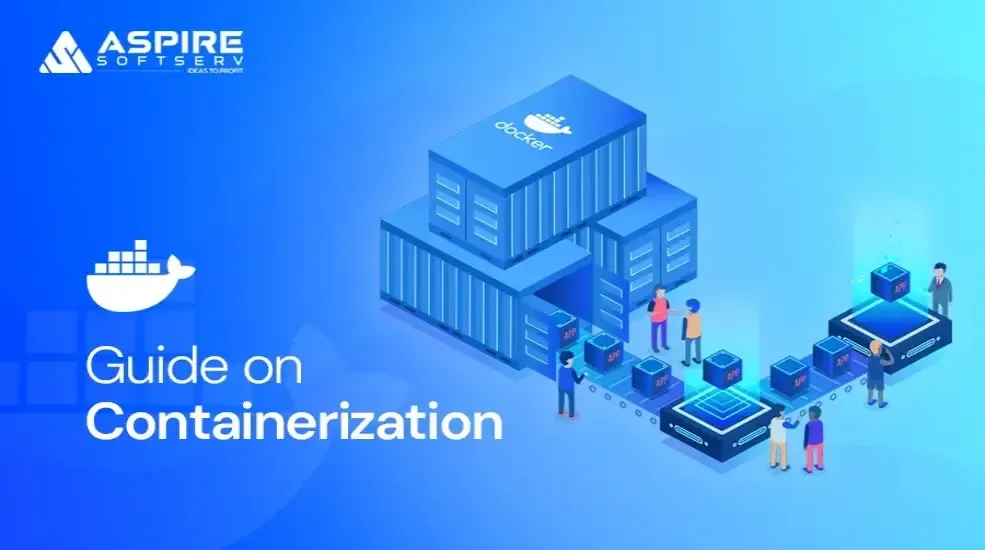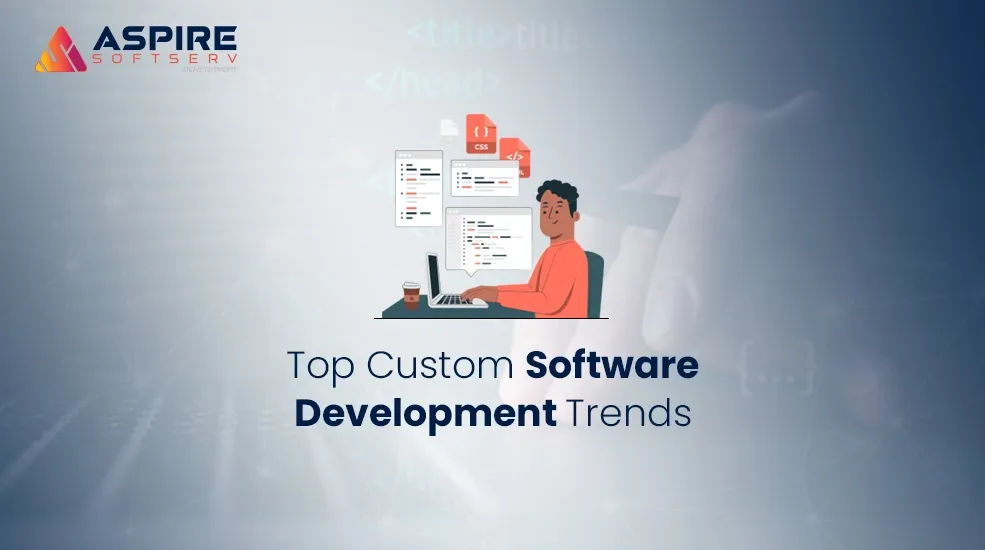
What Is Containerization?
A software deployment technique called containerization packages an application's code with all the files and libraries required for it to function on any kind of infrastructure. In the past, you had to install the version of any application that matched the operating system on your computer to use it.
For instance, on a Windows computer, you have to install a software program in its Windows version. However, you may create a single software package, or container, that works with a range of hardware and operating systems by using containerization.
How Does Containerization Work?
Containerisation is a virtualization technique that groups applications together with their dependencies into separate, self-contained units. Applications can operate safely and independently of one another on the same host thanks to these containers. This is how it operates:
- Applications for Packaging: Containerization is building a single executable software package known as a container
- The current software code: They comprises the program is called the application code.
- Configuration files: These include the settings and parameters needed for the program to run properly.
- Libraries & Dependencies: The additional software components and libraries required for the operation of the program.
- Portability: A container is runnable on any platform or cloud without any problems once it is created. Applications can be "written once and run anywhere" thanks to this portability. Compared to conventional methods, developers may construct and deploy containers more quickly and securely.
- Resource Efficiency: Compared to virtual machines (VMs), containers have a smaller capacity and require less startup time. The ability to execute multiple containers on the same computational resources as a single virtual machine (VM) results in increased server efficiency and lower costs.
What Is the Orchestration of Containers?
Software called container orchestration makes it possible to manage containers automatically. A modern cloud application may comprise thousands of microservices in their individual containers, therefore this is a must for development. Software engineers cannot manually manage the large number of containerised microservices.
The Advantages of Orchestrating Containers:
Container orchestration tools are used by developers to launch, stop, and manage containers automatically. With container orchestrators, developers can properly scale cloud apps without risking human error. For instance, you can confirm that the host platform's containers are installed with sufficient resources.
Containerization Tools and Platforms:
For effective management and orchestration of containers, containerisation depends on several tools and engines. These are a few of the more popular ones:
Docker:
The most widely used containerisation platform, Docker, makes the process of building, launching, and maintaining containers easier. It offers resources for creating container images, executing containers, and overseeing applications that are containerised.
Kubernetes:
Google created the open-source container orchestration software known as Kubernetes (K8s). It streamlines and automates containerised application deployment, scaling, and management. With its ability to operate containers across server clusters, Kubernetes offers great scalability.
Docker Swarm:
The built-in clustering and orchestration solution for Docker. It enables you to set up a cluster of Docker machines and distribute apps among them as services. The built-in capability for load balancing and rolling in Docker Swarm.
Advantages of Containerization:
Simple Packaging:
Let's say you're getting ready for a trip. You arrange your belongings carefully in different containers (like shoeboxes) as opposed to cramming them all into your bag. In a similar vein, containerisation enables programmers to bundle their applications along with all required parts (such as settings and libraries) into a single package. This facilitates the application's relocation, be it from your laptop to a server or between cloud providers.
Continual Setting:
Consider containers as tiny, independent universes. Your application functions consistently wherever it is deployed when it is run inside a container. Regardless of whether you're in a large data centre or on your home computer, it's like having your own little universe where everything functions in the same way.
Cross-Platform Compatibility:
Containers can run on any platform that supports containerization, including Linux, Windows, and macOS, providing flexibility and compatibility across different operating systems.
To demonstrate containerization installation, you could walk them through installing Docker, one of the most popular containerization platforms.
Here’s a Step-By-Step Guide to Installing Docker in Ubuntu:
Step 1: # Add Docker's official GPG key:
sudo apt-get update
sudo apt-get install ca-certificates curl
sudo install -m 0755 -d /etc/apt/keyrings
sudo curl -fsSL https://download.docker.com/linux/debian/gpg -o /etc/apt/keyrings/docker.asc
sudo chmod a+r /etc/apt/keyrings/docker.asc Step 2: # Add the repository to Apt sources:
echo \
"Deb [arch=$(dpkg --print-architecture) signed-by=/etc/apt/keyrings/docker.asc] https://download.docker.com/linux/debian \
$(. /etc/os-release && echo "$VERSION_CODENAME") stable" | \
sudo tee /etc/apt/sources.list.d/docker.list > /dev/null
sudo apt-get updateStep 3: To install the latest version
sudo apt-get install docker-ce docker-ce-cli containerd.io docker-build-plugin docker-compose-plugin. Step 4: To install a specific version of Docker Engine, start by listing the available versions in the repository:
# List the available versions :
apt-cache madison docker-ce | awk '{ print $3 }'
5:25.0.0-1~debian.12~bookworm
5:24.0.7-1~debian.12~bookwormStep 5: Verify That the installation is successful by running the hello-world image:
sudo docker run hello-world Step 6: you can check whether docker is properly installed or not
- Docker version
Install Docker in Windows:
Step 2: Then, double-click on the Docker Desktop Installer.exe to run the installer.
Note: You can download the installer (Docker Desktop Installer.exe) from Docker Hub and run it whenever you need to in the odd event that it is not downloaded.
Step 3: Once you start the installation process, always enable Hyper-V Windows Feature on the Configuration page.
Step 4: Then, follow the process of installation to allow the installer and wait until the process is done.
Step 5: After completion of the installation process, click Close and restart.
Install Docket in Mac OS:
Docker Desktop 4.3.0 removed the need to install Rosetta 2 in order to use Docker. But if you want a better experience, we suggest Rosetta 2.
To install Rosetta 2 from the command line, type the following command:
$ softwareupdate --install-rosettaStep 1: Drag the Docker icon into the Applications folder after double-clicking Docker.dmg to start the installer.
Step 2: Double-click Docker.app in the Applications folder to start Docker.
Step 3: To install it, it will ask for your Mac password. After entering your password, select Install Helper.
Checking Your Mac's Docker Installation:
After installation, you must confirm that the Docker Desktop is functioning properly. To begin, launch the Terminal software on your Mac and type the following command.
sudo docker --versionTo verify the docker installation.
sudo docker run hello-gfgSee Also: Generative AI vs Predictive AI: Unravelling the Future of AI
Conclusion:
In conclusion, by packing programmes and their dependencies into lightweight, portable containers, containerisation transforms software development. This method simplifies the development process, enabling more rapid and dependable deployments in a range of settings. Organisations may provide software with more agility and consistency and promote a DevOps culture by using containers, which provide improved scalability, efficiency, and security.
All things considered, containerisation makes new architectural patterns like microservices easier to embrace, makes complicated software system management simpler, and spurs innovation in the quickly changing field of software development and deployment. Increased speed, efficiency, and dependability are just a few of its obvious advantages, making it a crucial piece of technology for businesses looking to remain competitive in the fast-paced market of today.
Let's Build Your AI/ML Success Story




